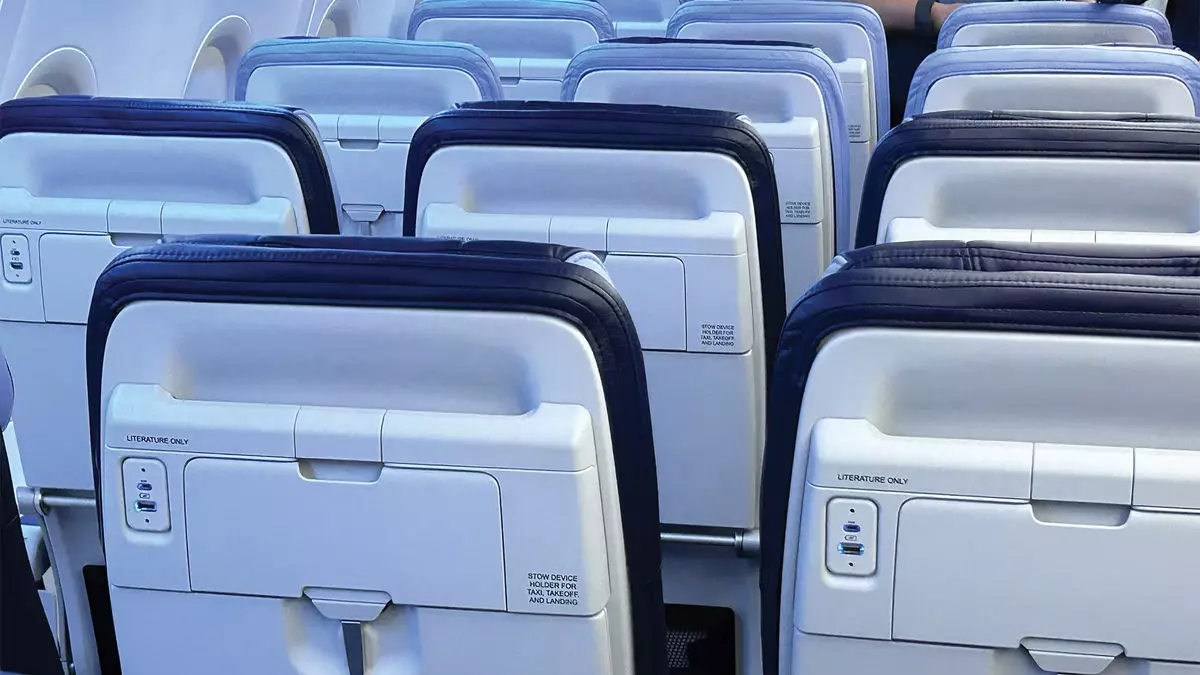In an evolving landscape of commercial aviation, where customer comfort and airlines’ operational efficiency go hand in hand, Southwest Airlines is gearing up for a substantial reconfiguration of its fleet. The implementation of extra-legroom seating marks not just a modification in aircraft design but a significant cultural shift within the company known for its open seating model. This transformative initiative raises critical questions about the execution timeline, strategic foresight, and the implications of such a change not only for passengers but for Southwest’s standing in a fiercely competitive market.
According to Southwest’s recent announcements, the retrofitting of planes with new extra-legroom seats will commence early next year, but customers won’t be able to book these premium seats until 2026. This extensive timeline may reflect deeper operational challenges facing the airline. Critics, including Elliott Investment Management—an 11% stakeholder seeking the removal of CEO Bob Jordan—argue that such initiatives should be rolled out more swiftly. They cite the agility seen in competitor airlines that have successfully adopted similar strategies in shorter time frames.
These claims highlight the potential sluggishness in execution that can hamper not just revenue growth, but also customer trust. The transition from an open seating policy, ingrained in the company’s operational DNA for over five decades, to an assigned seating format introduces complex logistical hurdles. Southwest is not merely changing seat configurations; it is also mandated to overhaul over 60 technological platforms. This ambitious plan must address the risk of operational errors during the transitional phase when some flights will continue open seating while others switch to an assigned seating arrangement.
The retrofitting initiative, which aims to create additional comfort with 34 inches of pitch for extra-legroom seats, will also necessitate a reduction in the space between standard seats from 32 to 31 inches. Such a move might seem like a compromise on passenger comfort to afford premium offerings, raising a fundamental question of customer experience versus profit motives. While the new arrangement is designed to appeal to passengers willing to pay for additional comfort, how effectively Southwest can market these changes while maintaining its brand identity as a low-cost carrier remains uncertain.
Southwest’s strategy to introduce four distinct seating segments—varying prices based on location—further complicates the situation. While this tiered approach could attract a wider range of customers, it might also alienate loyal customers accustomed to a straightforward ticketing system that emphasizes low fares over frills. It represents a broader trend in air travel that has seen airlines segment their services to optimize revenue, sometimes at the cost of simplicity and ease for passengers.
In conjunction with its new seating arrangements, Southwest has outlined ambitious plans to generate an additional $4 billion in revenue by 2027. A notable component of this strategy involves rekindling its partnership with Icelandair—a collaboration that had long been dormant. Such alliances could prove crucial for expanding Southwest’s network and attracting international travelers. However, the success of these partnerships depends heavily on effective marketing and operational cohesion.
The efficacy of this growth strategy will hinge not only on operational improvements but also on how well Southwest can navigate customer sentiment during this period of change. The airline’s existing loyal customer base may need reassurance that the essence of Southwest—affordable fares and customer-friendly policies—is not compromised in the pursuit of additional revenues.
The scrutiny of CEO Bob Jordan’s leadership presents another layer of complexity. As critics advocate for his removal, the broader implications for corporate governance and strategic vision come to the forefront. Effective leadership is crucial during transitions. Speedy and thoughtful execution could either bolster or break down customer trust. The management’s ability to navigate this challenging landscape without compromising the company’s foundational values will be the ultimate test of their strategic insight.
The road ahead for Southwest Airlines is fraught with challenges as it attempts to introduce extra-legroom seating and assigned ticketing. The juxtaposition of customer comfort with operational constraints, market competition, and evolving leadership dynamics adds several layers of complexity to this pivotal moment in the airline’s history. While there are opportunities to enhance the passenger experience and optimize revenue in this evolving landscape, the execution of these initiatives will be crucial. As airlines face a constant balancing act, Southwest’s ability to maintain its core ethos while innovating in the competitive aviation sector will ultimately determine its success.

